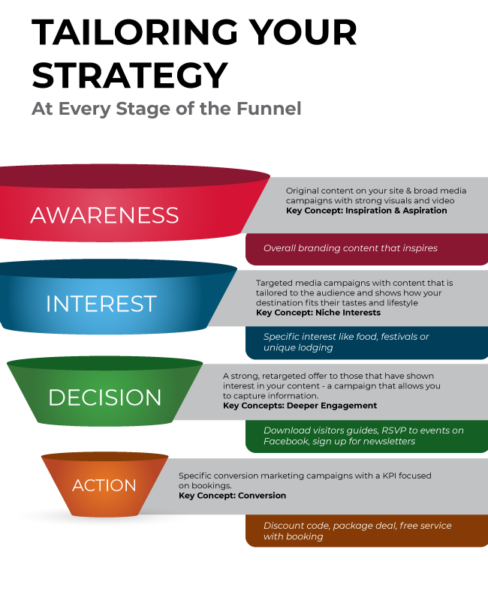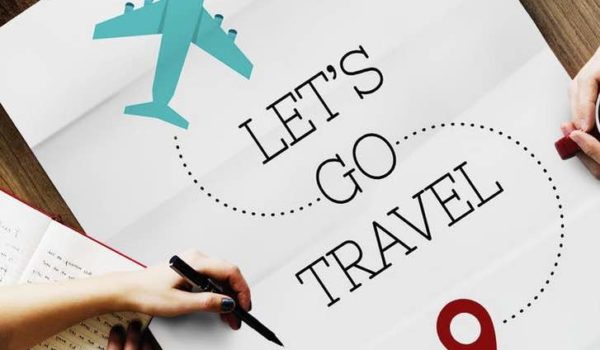One of the greatest shifts over the past few years in consumer travel is a demand for experiences over products. And this is a trend that transcends industry as well – personal consumption expenditures on durable goods, clothing, appliances and what are historically central pieces of consumer life have been declining while spending on experiences like eating out, recreation and travel are on the incline.
As a result of this shift, CVBs have an opportunity (and a responsibility) to tell the grander stories of their destination on behalf of the unique attractions, dining and events in their membership base. Travel marketers need to take a closer look at the purchase funnel and ensure they have a strategy for capturing attention at every stage. Identifying KPIs throughout the customer journey will help attribute revenue and success (or failure) to marketing efforts.

Awareness
Broader branding campaigns are nothing new for CVBs. This is where your professionally produced video and your visually stunning magazine and digital campaigns shine. Does your message inspire further research or interest? Do you have mechanisms in place to follow those consumers throughout their online journey as they travel down the funnel? Messages at this stage should give consumers something to aspire to – whether is standing at the top of a snowy mountain or watching the sunset on a beach, instilling the sense of escaping into a different reality is key.
Interest
At this stage, you’ve sketched out a few visitor personas and aligned them with targeted campaigns. You probably have several “ideal visitors” in mind that include not only standard demographics, but go deeper into lifestyle habits, interests and attitudes. Building campaigns and looking at them through the lens of your ideal traveler can help step outside the “that’s the way we’ve always done it” attitude and try and put yourself in the mindset of those you’re interested in attracting. Would they like a food festival? Would they be more inclined to book unique lodging? Having a good idea of the niche interests your destination can fulfill is a great way to segment your campaigns.
Decision
The decision stage is really where you want to take specific tactical measures to ensure you’re top of mind. This is where retargeting is an ideal way to remind consumers that they have shown interest in your destination and an opportunity to engage some of the marketing technology that measures conversion. Do you have a digital guide they can download? Do you have a unique travel planning tool on your site to direct them to? Encouraging direct engagement at this stage is important to leading them closer to conversion.
Action
For CVBs, the action phase can differ from traditional retail e-commerce sites. While many CVBs do offer travel booking tools, most people book travel through OTAs or directly with lodging/attraction partners. So how can you measure your contribution to that conversion? Did you include unique discount codes with your retargeting messages? Do you have relationships with all of your members that allow you to show you’re driving traffic to their sites? This stage is where you have to have a firm grasp and understanding of your KPIs so that they are actionable and attributable.
Agency partners have to have a solid understanding of this as well. Does your agency have access to the data they need to develop a solid strategy? And more importantly, do they use it? Many agencies act as media placement services, negotiating programmatic deals and executing direct ad placement. But in 2018, it must go beyond that. While we’ve gone through a traditional funnel in this article, we know that consumer buying behavior is anything but liner. Planning and measuring a multi-channel marketing strategy leaves no room for hyper-specialized agencies and media placement robots. There is a place for them within their relevant funnel stage, but having a partner with experience in all channels of media and engagement way pay off immensely to revenue generation.

